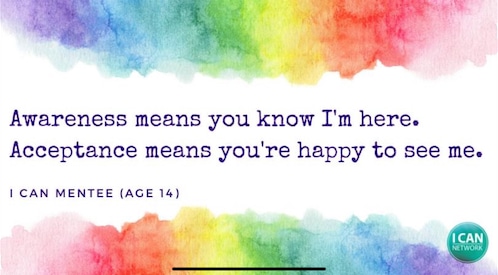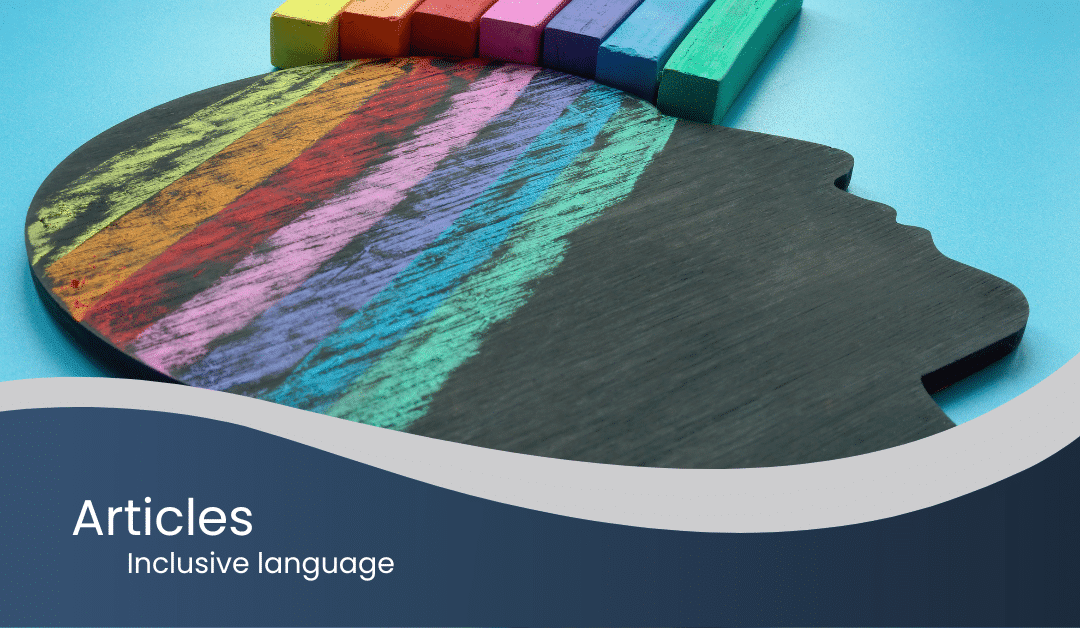Get clear on the language of neurological diversity
Planning content to mark Neurodiversity Celebration Week in March or World Autism Day in April? While these events aim to build awareness and understanding of different ways of thinking, they can create anxiety, stress and overwhelm among the very people they claim to celebrate.
The language and symbols you use have an enormous influence on the impact you deliver. Are we celebrating neurodivergence if our communication disregards the preferences of that community?
It’s worth understanding the difference between neurodiverse and neurodivergent.
By listening to and learning from the lived experiences of neurodivergent people, people who are not neurodivergent can better understand:
- why neurodiversity and neurodivergence are not the same thing
- that autism and ADHD are not the only neurodivergences
- neurotypical people don’t have a typical brain
- how euphemisms do not promote inclusion
- that puzzle pieces and blue ribbons are not acceptable
- why ‘acceptance’ is better than ‘awareness’
- how disordered language, such as Obsessive Compulsive Disorder, can cause harm
- why many people prefer identity-first language (autistic person) to person-first language (person with autism)
- that support needs are more respectful and helpful descriptors than terms like high or low functioning.
Neurodiversity Celebration Week: know what you’re celebrating
Neurodiversity Celebration Week is a global event aimed at challenging stereotypes and building a better understanding of neurological differences across all people.
It’s about transforming how neurodivergent people are perceived, highlighting their strengths and creating a more empowering, inclusive and fair society.
But sometimes the language around neurodiversity is itself misunderstood.
Neurodiverse and neurodivergent are not the same thing
Neurodivergent and neurodiverse are often used interchangeably, or as alternative terms for autism and ADHD. But each has a distinct meaning.
Neurodiversity refers to the differences that exist across all brains. Different brain wiring results in different ways of communicating, processing information, thinking and even moving.
Australian sociologist Judy Singer coined the term ‘neurodiversity’ in 1998, highlighting that, like fingerprints, no two brains are the same.
Neurodiversity is made up of distinct neurotypes
Increased advocacy around neurological differences (neurotypes) has seen the term ‘neurodiversity’ become more familiar.
So, what are some of those neurotypes?
- Autism
- ADHD
- Dyslexia
- Dyspraxia
- Dyscalculia
- Tic conditions (such as Tourette)
- + more.
People who have any, or a mix, of these or other neurotypes are known as neurodivergent.
What are they divergent from?
That’s where the idea of neurotypical comes in.
Neurotypical brains function in a way that is considered the norm by the majority population.
As Lived Experience Educator Sonny Jane Wise writes, there’s no such thing as a typical brain.
‘Neurotypical is a term to describe people who are rewarded a certain level of power and privilege for how closely their functioning aligns with neuronormativity,’ they explain in a social media post.
‘There are people who are not pathologised, marginalised or disadvantaged by society for the way they function or exist. Those people are neurotypical.’
Disability euphemisms are not helpful
First things first. Every individual has the right to describe themselves as they see fit. If they prefer a certain term, they should feel free to use it.
When personal preference can’t be determined, it’s helpful to know and follow broader community preferences.
In general, the disability community avoids euphemisms that are sometimes used to describe various conditions. This can include neurodivergence.
Terms such as special needs, differently abled, handicapable and diffability are offensive and condescending. Disability advocates say terms such as these suggest that disability is something to be ashamed of.
Puzzle pieces and blue ribbons are out
Autistic people now opt for the infinity symbol to represent their community and build genuine acceptance. Some present it in rainbow colours to represent the diverse spectrum of autism and other neurodivergent experiences. Others choose gold to symbolise value and self-worth.
Blue ribbons and ‘lighting it up blue’ are rejected by many in the autistic community because of its association with Autism Speaks. The autistic community at large feels this organisation does not support or affirm their strengths and instead views autism as something to be cured or fixed.
Many also find the puzzle piece symbol offensive. Who wants to be thought of as something to be solved and put back together?
Acceptance is better than awareness
Neurodiversity Celebration Week and World Autism Day are often described as awareness events. But awareness suggests the goal is merely to be noticed.
What’s needed is understanding, acceptance and inclusion.
As a 14-year-old member of autistic-led advocacy organisation I Can Network summed up perfectly, ‘Awareness means you know I’m here. Acceptance means you’re happy to see me.’

When you create content around these events and initiative are you simply marking the day? Think about how you can contribute to greater understanding and inclusion of neurodivergent people.
Disordered language hurts
Imagine being consistently described as disordered. This is how it can feel for many people labelled with Autism Spectrum Disorder (ASD), Attention Deficit Hyperactivity Disorder (ADHD), Obsessive Compulsive Disorder and other conditions listed in the Diagnostic and Statistical Manual on Mental Illness (DSM-5).
Diagnosis is incredibly important for people to get the support they need to live life on their terms. But outside of diagnosis, referring to a person as ASD or OCD (unless that’s their preference) keeps the spotlight on their difficulties rather than their strengths.
Identity-first ahead of person-first
While the broader disability community prefers person-first language (person with disability), the neurodivergent community opts for identity-first (autistic person).
In its advice on respectful language, autistic-led organisation Amaze says it also uses a capital A to represent the Autistic cultural identity. This is similar to other communities, such as the Deaf community.
Amaze says feedback from its community showed that two in three autistic people prefer identity-first language. But they also stress the importance of respecting individual preference.
Language choice also influences a person’s self-esteem. A 2022 online survey of 11,212 people found more than three in four autistic adults only use identity-first language when referring to their autism. The poll also asked people to respond to the phrase “I like being autistic”. It found 70% of those who call themselves autistic said they liked being autistic, compared with just 37% of those who used the term ‘people with autism’.
Functioning labels are unhelpful
You might have heard terms such as high functioning and low functioning, or mild and severe, particularly in describing autism.
These terms are unhelpful. This is because labelling someone as high functioning fails to acknowledge their challenges, which can fluctuate. Equally, the term low functioning minimises or disregards the strengths and talents of the individual.
This can be especially harmful in a school or workplace, where damaging assumptions about a person’s capabilities can prevent them from achieving their full potential.
It’s more useful to talk about higher or lower support needs, while understanding that these needs change depending on situations and environments.
Take your cues from lived experience
Most important of all is to listen to lived experience. If you interact with or write about neurodivergent individuals, take the time to check out what advocates have to say about respectful language and the reasons for those preferences.
Here are some Australian neurodivergent organisations and individuals to get you started. Check out their website or follow them on social media.
- Cherie Clonan
- Chloe Hayden
- Emily Hammond (NeuroWild)
- I Can Network
- Kristy Forbes
- Reframing Autism
- Sonny Jane Wise (Lived Experience Educator)
- The Autistic Realm Australia, Inc
- Tim Chan
- Wenn Lawson
- Yellow Ladybugs
As Lynda Mullaly Hunt writes in her novel Fish in a Tree, ‘Great minds don’t think alike.’
Neurodiversity is a term that acknowledges and respects the strengths and challenges of human variation.
Some of us are neurotypical. Some of us are neurodivergent. All of us are neurodiverse.
By understanding and using the positive language of neurodiversity we build a society that appreciates and celebrates the beautiful diversity of the human mind, and the immeasurable value those differences bring.


